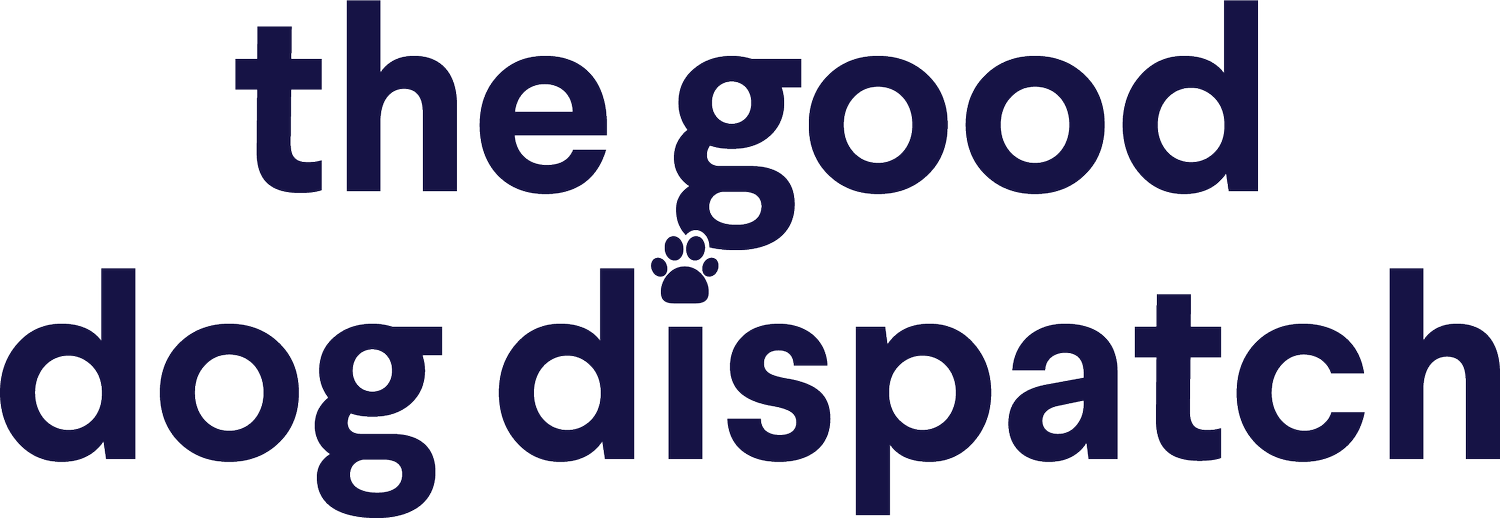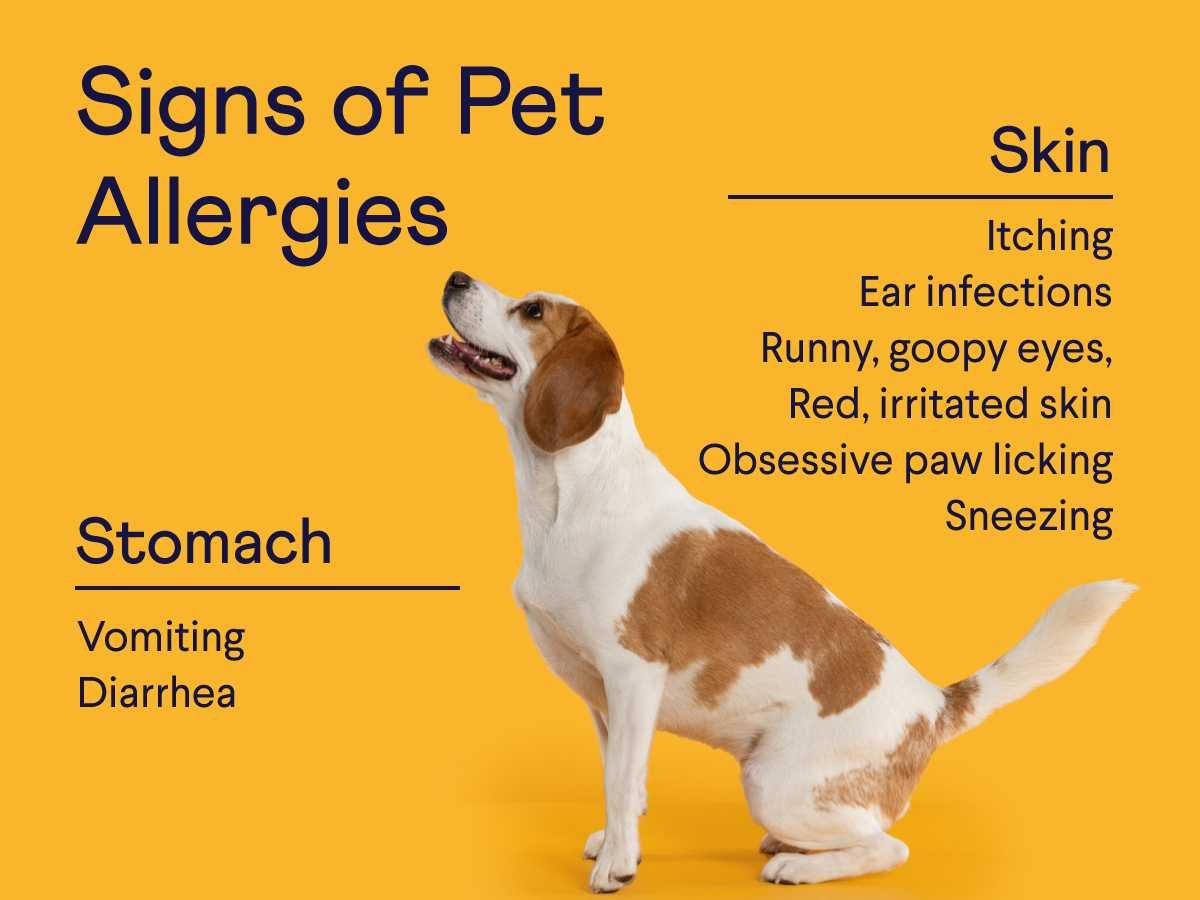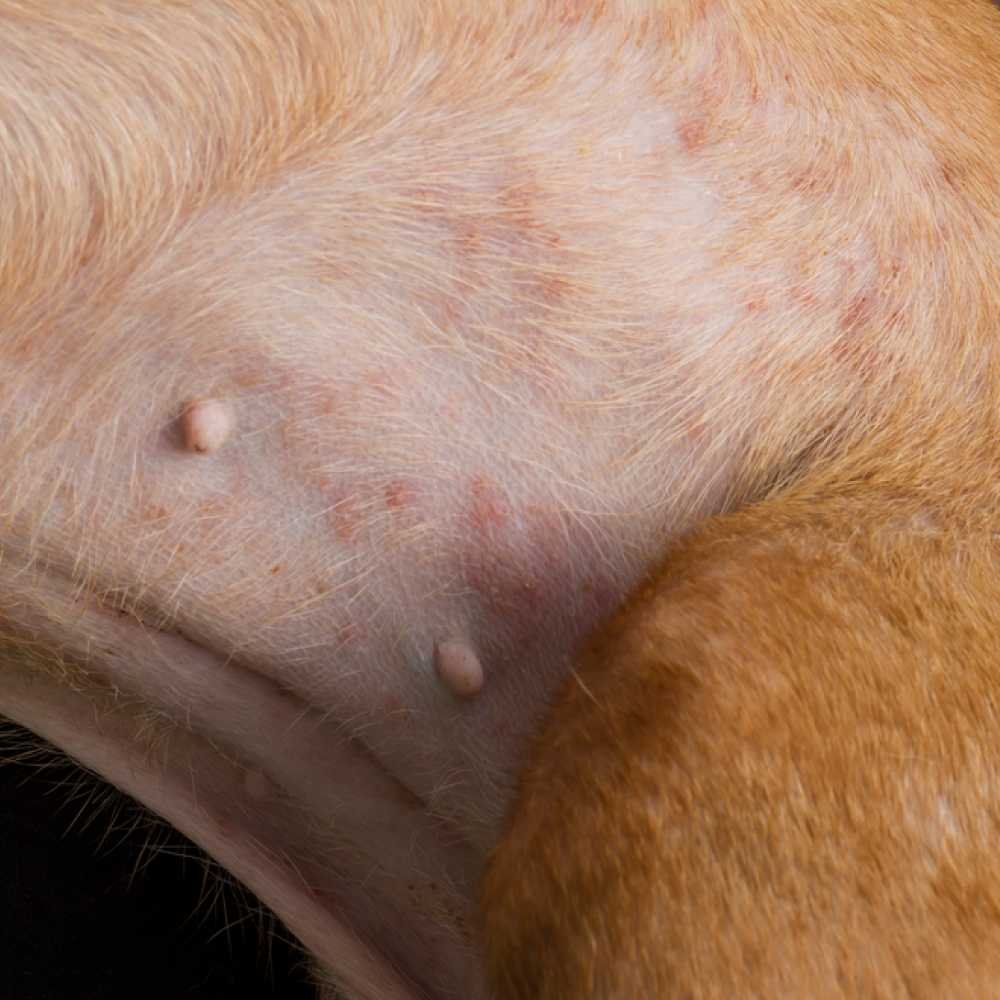5 Best Dog Foods for Allergies (2022)
What are the 5 best dog foods for allergies? We'll dive into the top novel proteins and how addressing your dog’s allergies can impact their overall health.
Is your dog dealing with allergies?
If so, a change in their diet could be vital to improving their symptoms.
With so many foods on the market, it can seem daunting to find the perfect one to help reduce your dog’s symptoms. However, finding the best dog food for allergies doesn’t have to be a full-time job.We’re here to walk you through the top five ingredients to look for and why they are so beneficial.
What Are the Symptoms of Pet Allergies?
The best way to know if your dog has food allergies is to have them checked by their veterinarian. However, you may want to identify your dog's symptoms prior to scheduling an appointment. If your dog displays any of the following symptoms, take note of them and consult their veterinarian at their next appointment. .
Vomiting
Frequent itching (can be localized to one area or happen all over the body)
Frequent ear infections
Sneezing
Runny, goopy eyes
Obsessive paw chewing and licking
Red, irritated skin
Diarrhea
As you may have noticed, dog allergies usually affect the skin and the stomach. The system impacted is also the primary source of potential complications, which can happen if the sensitivities are left for too long without being addressed by a vet.
For instance, dogs with skin sensitivities are more susceptible to developing skin infections. When your dog continually itches, those breaks in your dog’s skin allow potentially dangerous bacteria to get inside and cause systemic problems.
Sensitive stomach issues not only impair your dog’s digestion process but can also wear down your dog’s immune system. Chronic vomiting and diarrhea also put your dog at risk for dehydration and impact their ability to hold onto any nutrition.
Where Should I Start My Search for the Right Dog Food?
Although allergy testing for dogs does exist, it can often be cost-prohibitive. Because of that, many veterinarians recommend that pet owners start with an elimination diet to help narrow down what ingredients may be causing the problem.
Elimination diets take away the most common sources of food allergies for dogs. These diets are incredibly strict and involve feeding your dog either a home-cooked diet that contains only specific pre-determined foods or a prescription therapeutic food with protein and carb sources your dog hasn’t tried before.
During the elimination diet, your dog will need to avoid table food, chew toys made with animal products (rawhides, bones, pig ears), unapproved dog treats, medications with flavoring, and supplemental fatty acids.
Switching to the elimination diet should take place over a five to seven-day period (to reduce the risk of GI issues) and continue for eight to 12 weeks. The goal is to see reduced symptoms, followed by a slow reintroduction of foods one at a time to identify the exact trigger (or triggers).
What Types of Foods Are Available for Dogs with Allergies?
When choosing the best dog foods for allergies, you will be picking from two categories — limited ingredient foods and hypoallergenic foods.
Limited ingredient foods contain far fewer ingredients than more commercial dog foods on the market. They are also available over-the-counter and don’t require a prescription from your veterinarian.
Hypoallergenic foods often do require a veterinary prescription. What makes these foods “hypoallergenic”?
They use hydrolyzed proteins that have been chemically split into their most basic amino acids possible. The result of this split is that the protein, even if it is one that your pet has previously been allergic to, is rendered invisible to their immune system.
What Are the Top Protein and Carbohydrate Allergens for Dogs?
Let’s briefly discuss the top food allergens that trigger an allergic reaction in dogs. While this isn’t a comprehensive list, and your dog can become allergic to any foods at any time, the following are most common, according to veterinarians.
Beef
Chicken
Corn
Dairy products
Egg
Lamb
Soy
Wheat
When switching dog foods in an attempt to help your dog with their allergy symptoms, it’s often best to avoid all of the above. Unfortunately, if you check the ingredient list of nearly every commercial dog food, you’ll find at least some of those listed.
You may have to really dig to find a better option, but that becomes much easier when you know what to look for on an allergy-supportive ingredient list.
What Ingredients Should I Look For With the Best Dog Foods for Allergies?
While switching foods to a more “novel” protein may not solve your dog’s allergy problems, it can be a huge step toward helping them live a healthier, less itchy life!
If you do decide to switch your dog’s food, you must do it slowly to avoid GI issues. Food switches are best when you extend them out over a week or so. You’ll start with 75% of your pet’s current food and 25% of the new food, and increase the ratio of new food by 25% every few days if your dog is adjusting well.
Here are the five proteins that are the least likely to trigger allergy symptoms while still maintaining a flavor that your dog is interested in. If possible, try to stick with a single protein source to minimize potential allergen exposure.
#1) Venison
Venison, the ingredient name for deer meat, is one of the most popular novel dog food proteins on the market. In addition to its positive impact on allergy symptoms, venison also has other benefits for your dog.
Venison does have slightly less protein than other sources, like beef. However, it makes up for it by having less fat and cholesterol, making it a much healthier option for your pet. This is an especially crucial benefit for dogs who struggle with obesity. In addition, venison is rich in B vitamins and other essential minerals like iron, phosphorus, and zinc.
#2) Rabbit
Like venison, rabbit is also a novel protein. It is all white meat, so it naturally has less cholesterol than other protein sources. Rabbit meat is also packed with vitamin B12, a critical vitamin for your dog’s energy level and nervous system function.
Rabbit meat contains more protein per serving than venison, chicken, beef, duck, lamb, turkey, veal, and pork. Protein is vital for all dogs, however, protein intake requirements vary based on breed, size, and age.
#3) Duck
You’d think that chicken and duck would be in the same category, as they are both “poultry,” right? Surprisingly, duck is light years ahead when it comes to proteins that help reduce the potential for food allergies. Again, this is due to its status as a “novel” protein.
Duck has a lot of dog-friendly nutrients, including copper, iron, omega-3, selenium, vitamin B3, and zinc. It also has a high biological value as a protein source, as it contains higher amounts of protein that the body can access easily.
#4) Kangaroo
Although kangaroo may sound like a strange protein source, it is also one of the most novel. After all, how often do dogs come across kangaroos in the wild?
It is high in protein, low in fat, and easy to digest. Like rabbit, kangaroo is an excellent choice for dogs who struggle with obesity. The meat also contains a specific fatty acid called CLA (conjugated linoleic acid). These molecules function as antioxidants, support the immune system and help reduce cholesterol.
#5) Bison
Bison (or buffalo) is the final protein source proven effective for dogs with food intolerances.
The meat is high in protein and iron and low in fat. It is also rich in vitamin B2 and B3, which helps convert it to a source of useable energy more easily. That makes it great for dogs who struggle with the GI symptoms of food sensitivities.
Is Grain-Free Beneficial?
Grain-free is a hugely hyped label, but is there any benefit to removing grains from your allergic dog’s diet?
First of all, what exactly does it mean for dog food to be grain-free? Essentially, grain-free dog food has an ingredient list that avoids cereals like wheat, brown rice, oats, and barley. However, instead of simply removing those ingredients, pet food companies replace them with other, healthier carbohydrate sources like sweet potato, peas, chickpeas, and lentils.
The diet has come under scrutiny recently, as it may contribute to developing specific heart issues (like dilated cardiomyopathy) for dogs who eat it long-term. Because of that, it’s best to check with your veterinarian before switching your pup to a grain-free diet (no matter how high-quality it is).
In Summary
When looking for the best dog foods for allergies, look for a formula that contains a novel protein source. Switching to one of the limited-ingredient diets or hypoallergenic dog foods minimizes the potential allergens your dog may eat so that they can have a happy, healthy life without all the chewing, sneezing, and itching.
Sources:
Identifying food allergies: The veterinary elimination diet trial | dvm360






